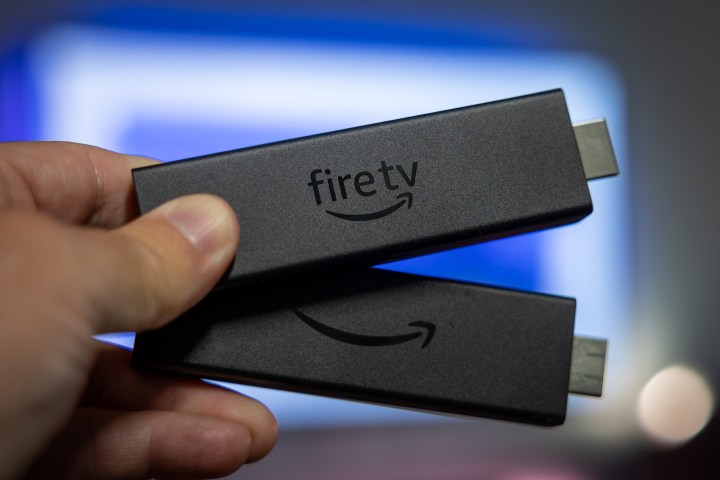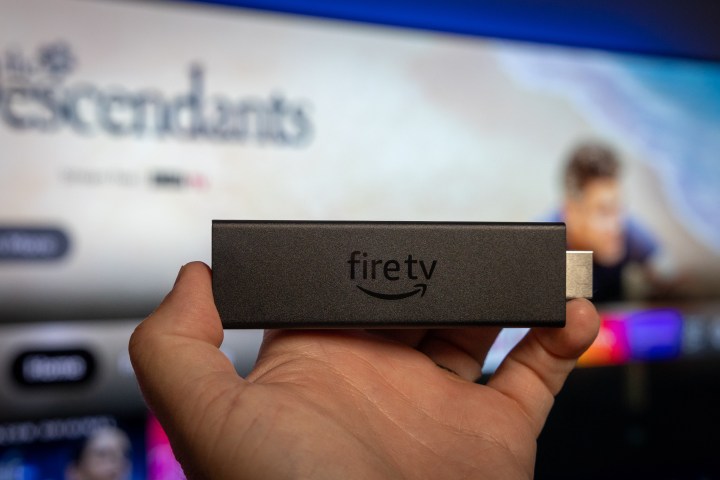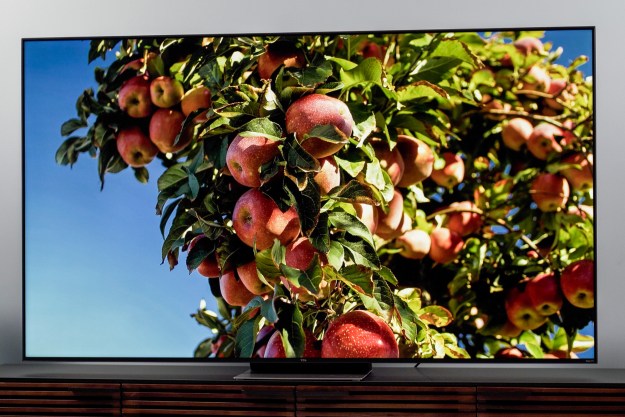
“It's an iterative update, sure, but one that makes the Fire TV Stick 4K Max the one to get.”
- Better processor and Wi-Fi
- Includes the new remote control
- Still extremely affordable
- Built on an aging version of Android
The most important feature of any streaming stick probably isn’t listed on the side of the box. It’s not how much RAM it has. It’s not the size of the on-board storage. It’s not whether it has 4K (OK, it’s more than a little about that), and it’s not the Wi-Fi speed or the processor. And it’s not all the apps it has access to.
The most important feature of the new Amazon Fire TV Stick 4K Max is the price. That’s really what determines where it fits not just within Amazon’s lineup of Fire TV devices, but also its place in the greater scheme of things against its closest competitor, Roku, which has its own line of relatively low-cost streaming sticks. Sure, the specs determine the price. But tell us how much you want to spend, and we’ll tell you the best streaming device to get.

And the Fire TV Stick 4K Max, despite being an iterative update (there’s certainly nothing wrong with that) and despite being quite a mouthful to say (that we take a little issue with), it’s definitely the Fire TV Stick to buy.
Here’s why.
The Fire TV Stick Max is mostly a Fire TV Stick 4K, only better. It’s more Max.
What’s new in Fire TV Stick 4K Max
This isn’t just the Fire TV Stick. It’s not the Fire TV Stick 4K. This one is Max, which we can only assume is a step above Plus but still below Extreme. It’s a silly suffix tacked on to a product that itself mostly is an iteration on an iteration. That’s how these streaming sticks work. You have certain features at certain price points, so you’re guaranteed to make money no matter what. More on that below.
Amazon’s own comparison chart spells it out quite well. The Fire TV Stick 4K Max ticks a couple more boxes than the Fire TV Stick 4K, which at this point is three years old. And they’re not unimportant boxes.
The Fire TV Stick 4K Max is the first in the Amazon lineup to sport Wi-Fi 6, aka 802.11ax. That means it’ll take advantage of the latest wireless standards if you’ve got a Wi-Fi 6 router, or be ready for when you do. You shouldn’t necessarily expect warp-speed Wi-Fi, but you’ll have more than enough bandwidth to get the job done. Connected wirelessly to an Eero Pro 6 (conveniently, another Amazon-owned product), I was pulling upward of 250Mbps downstream, with ping times between 20ms and 25ms. By comparison, the previous-generation Fire TV Stick 4K got about 200Mbps downstream on Wi-Fi 5, with similar pings.
For those who are saying “Just grab the Ethernet adapter!” — let me stop you there. You’re almost certainly going to want to just go ahead and use Wi-Fi with the Fire TV Stick 4K Max over Amazon’s own Ethernet adapter, which isn’t included in the box anyway. That adapter — which provides power as well as the wired network connection — is a 10/100 device, meaning it’s actually going to top out at a 100Mbps connection anyway. And in my case, that means getting around half the speed as I was seeing on Wi-Fi, to say nothing of not getting close to taking advantage of my true-Gigabit fiber connection.
In other words, stick to the Wi-Fi 6 built into the Fire TV Stick 4K Max. It’s plenty good.
Elsewhere, the Fire TV Stick 4K Max ships with the latest Alexa Voice Remote, which came out in April 2021 and has been redesigned ever so slightly, with a few extra buttons and features.
The Max also has a little more RAM, which is important because it’s an Android-based device, and Android still needs all the RAM it can get. Not that 2 gigabytes is a lot, and it’s only a half-gig more than the Fire TV Stick 4K. But we’ll take what we can get. And the processor has been updated, too, to a quad-core Mediatek MT8696 at 1.8GHz. If that’s the sort of thing you care about, good on ya. If it’s the sort of thing you think you can notice over the older Fire TV Stick 4K, you’re probably lying, are an engineer, or are running the two devices side by side. The point is those are important and obvious updates, but also certainly not something that’ll change the way you watch TV on Amazon Fire TV.
In other words, it looks and acts pretty much like the Fire TV Sticks of yore. Just a little better. If you’re like us and are dumb enough to have more than one Fire TV Stick laying around, you’ll quickly forget which is which. I was flipping back and forth between the 2018 Fire TV Stick 4K and the new Max and immediately had no idea which was plugged in without actively checking. In fact, the two are darned near twins in person, with the only visible difference the “Fire TV” moniker added onto the casing. The older stick just has the Amazon Smile. On screen, there’s really no difference.
And it now supports picture-in-picture, if that’s a thing you have to have.

What’s still in the Fire TV Stick 4K Max
If you’re a current owner of an Amazon Fire TV Stick, you know what to expect. You’ve undoubtedly been using the new Fire TV OS user interface that rolled out earlier in 2021. That it’s still based on Android 9 and not something newer (Android 12 is currently being released just now) is a bone of contention for some, and certainly at least a slight cause for concern. But given that this is Amazon we’re talking about and not some no-name importer that just slaps Android on top of some hardware and calls it a day, we’re slightly less worried. But, still, Amazon really does need to get into the double digits sooner rather than later, and it’s only a matter of time before our patience really starts to wear thin.
The other basic specs remain the same as the older Fire TV Stick 4K. It still supports 4K resolution with Dolby Vision, HDR10+ and HLG for high dynamic range, and Dolby Atmos for audio. Of course, your TV and sound system will need to support all that, too, if you intend on making any use of it.
If you’re going to be using Alexa with your Fire TV Stick 4K Max, you’ll be doing so via the Alexa remote. That’s unchanged, since there’s no microphone of any sort tucked into the stick itself.
There’s also nothing new on the app side. Amazon’s Fire TV OS still has access to all the things it’s had access to, like Netflix, Hulu, and Apple TV+, to name but three.

Buy it for future-proofing, not because it’s exponentially “better.”
Our take
If you’re in the market for a new Fire TV Stick, the Fire TV Stick 4K Max is the one to get. Full stop.
I’d even recommend it over the Fire TV Cube, for a couple of reasons. First is that it’s about half the price, which in and of itself should be a no-brainer. If you just have to have hands-free Alexa (as in not having to press the voice button on the remote control first), you can get a Max and a new Echo Dot and still have plenty of money left over to buy lunch. The second is that it has been a couple of years since the Fire TV Cube has been updated, which means older internals. That’s not a huge deal in devices like this, but it can matter over time. Newer is almost always better.
Are there any alternatives?
Sure. Anything that plugs into a TV and shows videos is an alternative. And the biggest competitors to the Fire TV Stick 4K Max are the other Amazon Fire TV Sticks.
| Fire TV Stick Lite |
Fire TV Stick |
Fire TV Stick 4K |
Fire TV Stick 4K Max |
|
| Year released | 2020 | 2020 | 2018 | 2021 |
| Retail price | $30 | $40 | $40 | $55 |
| Resolution | 1080p | 1080p | 4K | 4K |
| Dolby Vision | No | No | Yes | Yes |
| Dolby Atmos | No | Yes | Yes | Yes |
| Wi-Fi version | Wi-Fi 5 | Wi-Fi 5 | Wi-Fi 5 | Wi-Fi 6 |
| Storage | 8GB | 8GB | 8GB | 8GB |
| Memory | 1GB | 1GB | 1.5GB | 2GB |
Where the Fire TV Stick 4K Max fits into the greater scheme of inexpensive streaming sticks — that is, around the $50 range — really just comes down to ecosystem. Do you want Fire TV? Or do you want Roku? Or what about Chromecast with Google TV? Each has its merits and falls in the same price range. I’d generally argue that Fire TV OS is the more mature and sophisticated operating system, whereas Roku is simplistic and easier to navigate. Both are smattered with ads and other opportunities to spend money, and both also are heavily pushing their own advertising-based video-on-demand services. Amazon has IMDB TV, and Roku has The Roku Channel. Pick your poison. Chromecast With Google TV is its own animal. If you’re way into Android, I’d look here.
The bigger question I have is what happens to the rest of the Fire TV Stick space. Amazon told us it has no intention to stop selling the legacy Fire TV Stick 4K, which at the time we’re publishing this is $15 less expensive than the 4K Max when not on sale — and you’ll undoubtedly find it for less sooner rather than later. I’d say that extra $15 is worth it for the Wi-Fi 6 future-proofing and the newer remote control, which on its own sells for $30. Throw in the upgraded processor and memory and it just makes sense. You get a bigger bang for your buck. And presumably, Amazon either will phase out the older Fire TV Stick 4K, or maybe even rearrange the entire line. It still has the Fire TV Stick at the same $40 price as the older Fire TV Stick 4K, which doesn’t really make sense because it tops out at 1080p resolution. And then there’s the Fire TV Stick Lite, at $30. That’s not much of a spread, so don’t be surprised if Amazon consolidates things at some point.
How long will it last?
We have no idea. It’s a little piece of plastic and metal. But generally speaking, Fire TV Sticks have lasted far longer than they need to. Not that we’re fans of setting money on fire, but these things are cheap. They don’t have moving parts, they probably aren’t being moved around all that much, and they’re pretty much commodities at this point. They’re impulse purchases. In the rare event that one fails on you — and that’s not something you hear of very often — chances are you’ll just buy a new one without too much thought. For everything else, there’s everybody’s favorite post on how to fix Fire TV stick problems.
Should you buy it?
Did you read the 1,700 words above? Yes. The Fire TV Stick 4K Max is the one we’d get.
Editors' Recommendations
- What is Dolby Vision? The dynamic HDR format fully explained
- The first Roku-made televisions are now available at Best Buy
- The best TVs of 2023: our favorites from Samsung, LG, Sony, and more
- T-Mobile subscribers can get MLS Season Pass for free
- Apple AirPlay 2: the wireless audio and video streaming tech fully explained






